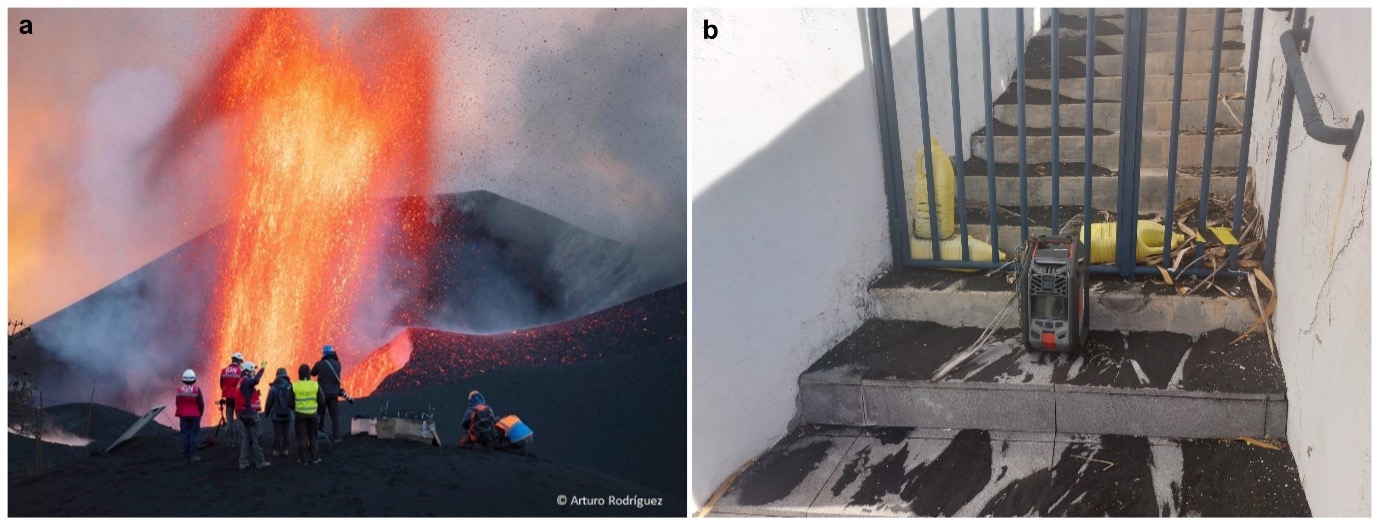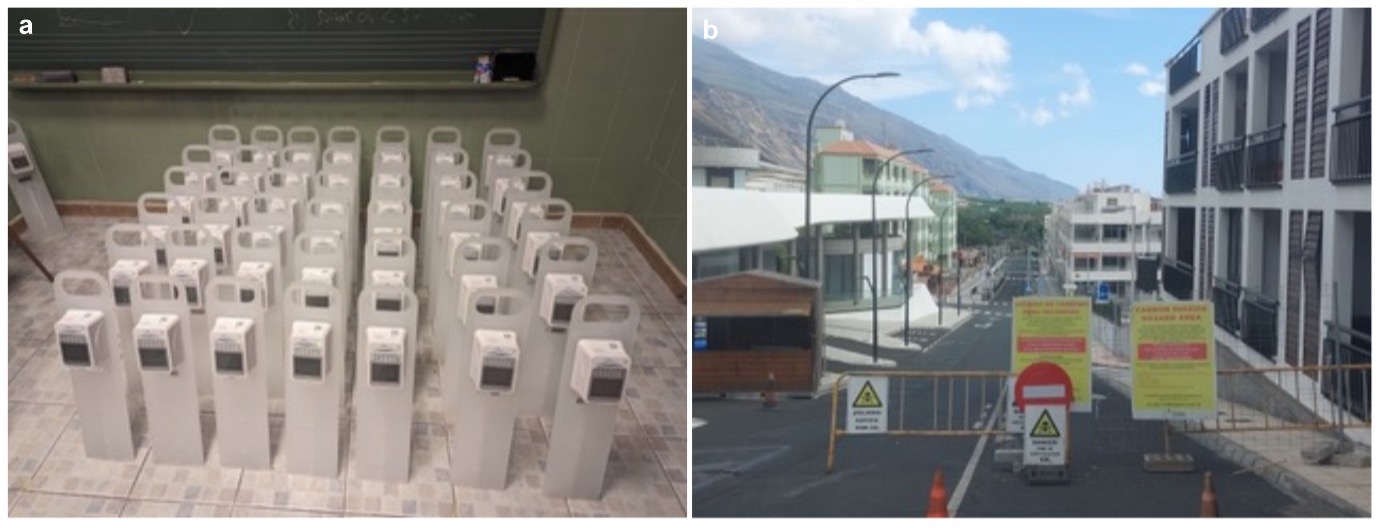Volcanic gas monitoring in La Palma
During the final weeks of the 2021 volcanic eruption on the island of La Palma (Figure 1a), the presence of toxic gases was detected at several points in both Puerto Naos and La Bombilla. At that time, the institutions launched a plan to determine which gases were present, in which exact areas they were being emitted, and the fluxes and concentrations involved. To this end, they carried out several carbon dioxide (CO₂) measurement campaigns, creating grids and measuring each point individually to produce a map showing where the most significant fluxes occurred and whether there were areas of high concentration. Sensors were also installed to measure carbon dioxide (CO₂), carbon monoxide (CO), methane (CH₄), hydrogen sulphide (H₂S), and oxygen (O₂), to detect possible emissions of these gases (Figure 1b).

Figure 1. a. Scientific personnel carrying out monitoring tasks during the 2021 volcanic eruption in La Palma; photograph by Arturo Rodríguez, https://www.ign.es. b. Example of a sensor installed in a house in La Palma to detect possible emissions of CO₂, CO, CH₄, H₂S, and O₂; photograph by Rubén López.

Figure 2. a. CO₂ meters from the ALERTA CO₂ project moments before being deployed by the IGN and INVOLCAN in homes in La Palma; photograph by Rubén López. b. ‘Danger zone’ signage due to volcanic gas emissions in Puerto Naos; photograph by Rubén López.
Once the CO₂ sensors were deployed, and starting in March 2024, a continuous monitoring service was established. This service operates 24 hours a day and has personnel responsible for analysing CO₂ concentration graphs in real time. In this way, increases in gas concentration can be detected and the situation immediately reported to Emergency Personnel, allowing the implementation of necessary protection measures.
Currently, reports on the activity recorded by the more than 1500 sensors of the ALERTA CO₂ project are periodically presented by the IGN and INVOLCAN in the Scientific Committee, where the emergency (PEINPAL) and its effects are analysed.
In addition to the CO₂ concentration sensors, outreach campaigns and informational posters have been carried out to inform the population directly about the real situation and to help them understand the phenomenon of gas emissions.
López, R., Prieto-Torrell, C., López, C., & Geyer, A. (2025). VOLCANIC GAS MONITORING IN LA PALMA. Zenodo. https://doi.org/10.5281/zenodo.15880192
Textss: Rubén López (IGN), Claudia Prieto-Torrell (GEO3BCN-CSIC), Carmen López (IGN), Adelina Geyer (GEO3BCN-CSIC)
Ilustrations: Noah Schamuells (GEO3BCN-CSIC)
Terms of use: This document is published under a CC By-NC-ND (Creative Commons Attribution-NonComercial-NoDerivates) license. Downloading and sharing is allowed freely as long as proper credit is given. It may not be changed in any way or used commercially. For more information about the CC By-NC-ND click here.
